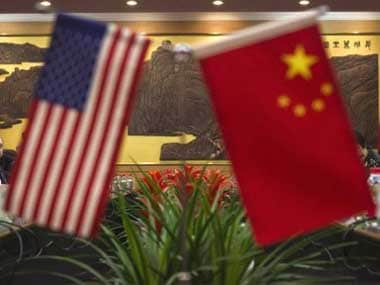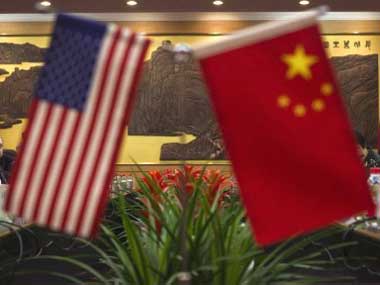Around 430 BC, the leaders of Athens would not have so much been pondering how to forcefully deal with its powerful neighbour Sparta, but worrying about access to trade and supplies, given the city state’s absolute dependence on imports for food supplies. That, as research now shows, was a fundamental factor in the ensuing wars that were to turn the around fundamentals of European history. [caption id=“attachment_3796481” align=“alignleft” width=“380”]  Representational image. AFP[/caption] Centuries later, it was the turn of the British, and with less success the French and the Portuguese, to send their merchants and then their navies—in that order—to scour the world for cheap resources on which their populations were dependent. Big powers have been doing this for a long time, and when they clashed with an existing or new power, the end result was war. An entire branch of international relations is built around historian Graham Allison’s “Thucydides trap” (named after the legendary Greek historian Thucydides), which posits inevitable conflict as an end result of this process. While scholars aplenty deny or affirm the inevitability of this doctrine in relation to the rise of China and the Trump administration, it is important to tick mark two things about the growing trade war between the two. First, for centuries, the bottom line in all these battles has and always will be about money. The Athenians, who produced no food, built up a navy to get their grain. Fast forward to the present, where the American taxpayers need cheap oil and cheaper grain, without which they tend to vote out a government. Ergo, the American Navy and its war machine. Which brings in the second issue. The US can’t readily go to war with China with a Pericles at the helm of its fighting fleet. China not only has nuclear weapons aplenty, but also $1.7 trillion in US Treasury Bonds. It’s difficult to go to war with someone who has large chunks of your economy in his pocket. The simple truth, therefore, is that to remain on top of the food chain, the US needs to keep China in its place. That’s becoming increasingly difficult. China is challenging US supremacy with its massive Belt and Road Initiative (BRI) with its land and sea routes, thus extending Chinese influence well beyond the “golden age” of the Tang dynasty. Envisioned by President Xi as “a road for peace”, it seems anything but. Today’s BRI has acquired a reputation for creating debt traps and virtual takeover of sovereign territory in return. According to Bloomberg, the BRI has already outpaced the massive post war Marshall Plan, with a promised $1.3 trillion, even though actual spending figures are probably half of that. It’s not just the money, however. It’s the vision of an apparently benign Chinese power slowly extending itself across Asia, with all of this aimed at the greater good and survival of the Communist Party and its president. That’s enough to scare Washington, particularly when its own economy seems sluggish. An outflow of this planned access to cheap resources is the far more specific and vital “Made in China 2025” . This aims at ending the earlier assembly line production lines which allowed US companies to access cheap labour and keep high-end technology to themselves. Chinese law requires US companies to transfer technology to domestic companies if they want to gain access to the Chinese market. But progress has been slow. The 2025 plan is thus a kick-off for the objective of moving Chinese industry rapidly up the value chain in ten key areas of technology. The most blood is likely to be spilled over fifth generation of wireless technology, artificial intelligence and cyber technology. With China’s formidable production lines, the targets are ambitious. This includes for instance, domestic production of at least 40 percent of chips for smartphones, that Chinese airlines hit 100 billion yuan in revenue by 2020 and doubling that thereafter, and that China should be a world leader in ship building and marine engineering. All of this is making US companies extremely uneasy. Take a look at the public notices on trade tariffs on the US Federal Register. Appeals from US businesses against tariffs on products not related to the list under China 2025 are probably going to escape the hammer. Clearly, this trade war is targeted at preventing that massive programme taking off. This is big money fighting back. There is no doubt that Beijing is hurting. The stock markets have taken a battering, with the Shanghai Composite Index the worst performing, on the lines of such crisis-hit markets such as Venezuela. The US is going to hurt too. The Washington Post reported that two-thirds of about 430 US firms are reporting losses due to delays in customs and regulatory scrutiny. Despite this, few are planning to move out of China. That may change as the tariffs bite. Meanwhile, China is already taking corrective measures. President Xi travelled to the Eastern Economic Forum, the first time he has done so since its founding in 2015. There, apart from a raft of agreements—including a tie up between Ali Baba and Russian firms for a new e-commerce platform and plans to access Russian agriculture— Putin was quoted as saying that the two countries were planning to use their own currencies in trade instead of the dollar. The trade war may change the way the world does business, and incidentally, goes to war. Don’t forget Chinese troops were part of the tri-service massive Vostok military drills. The basic issue is how New Delhi is likely to be affected. A study by the commerce department that seems to foresee considerable advantage for Indian trade into China was doing the rounds recently. The study identified some 100 goods which India could provide for the Chinese market. Most of those identified seem to be in the low value category such as fresh grapes, cotton linters, tobacco, and certain chemicals. On the other side of the coin, Indian seafood exporters for instance, are eyeing the US market, as Chinese imports become noncompetitive. There’s another possible outflow of all this trade invective that has yet to be examined. US companies are going to be looking for other places to play, where labour is cheap and the politicians cheaper. There’s a fine line to walk here, not to mention a hope that Indian manufacturing will finally realise the need to substantially increase research and development into those key ten areas that China (and everybody else) is targeting. Chinese expenditure on research and development has been steadily climbing: From 0.9 percent of GDP to 2.1 percent in 2015. It is expected to rise further, and it is this that has made global brands of Chinese firms. The Economic Survey of India points out that research and development has remained stagnant for 20 years. Indian industry is unfortunately used to government hand holding and few have even minimal commitment to innovation. That has to change if India has to get on this new gravy train. Meanwhile, policy makers need to deal innovatively with the fact that new red lines are being drawn as the world slowly divides itself on one side or the other of the warring parties. New Delhi has, so far, been able to navigate an equidistant path. That may not last long. As the lessons of centuries reminds us, the gun usually follows the trade.
The vision of an apparently benign Chinese power slowly extending itself across Asia is enough to scare America
Advertisement
End of Article


)

)
)
)
)
)
)
)
)



